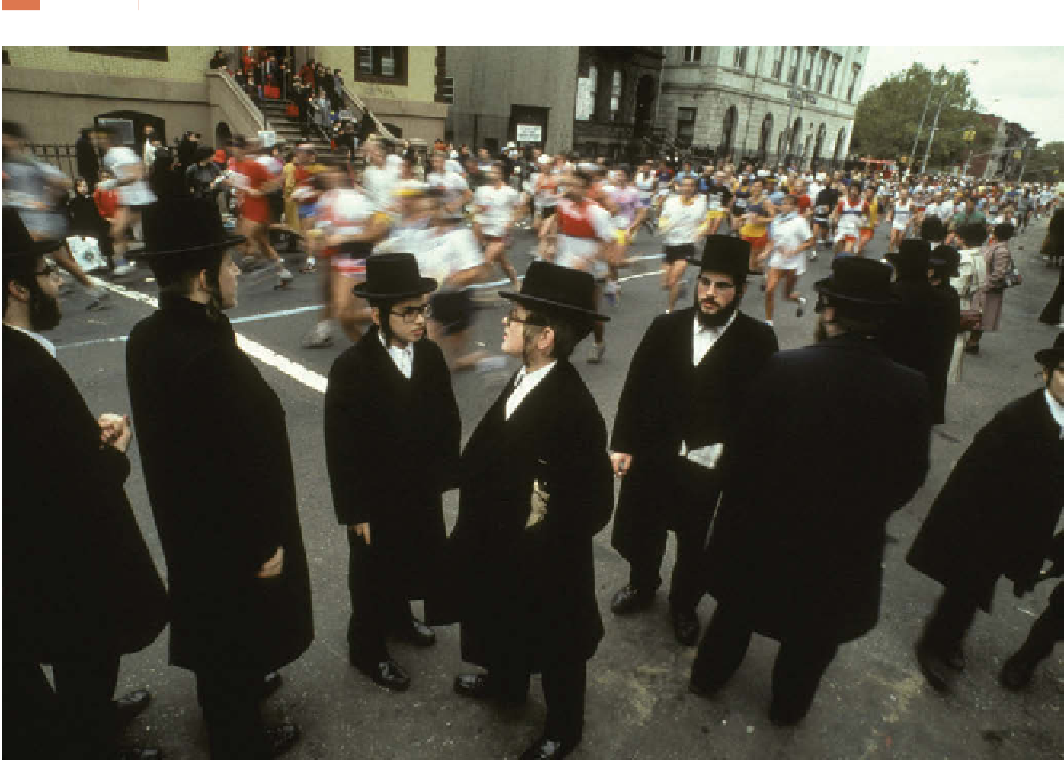Geography Reference
In-Depth Information
purportedly half eaten by President Barack Obama,
being commodifi ed in Internet space.
Commodifi cation affects local cultures in numerous
ways. First, their material culture, their jewelry and clothing,
their food and games, can be commodifi ed by themselves or
by nonmembers. Similarly, their nonmaterial culture, their
religion, language, and beliefs, can be commodifi ed, often by
nonmembers selling local spiritual and herbal cures for ail-
ments. Local cultures may be commodifi ed as a whole, with
tourist buses “observing” the Amish culture of Lancaster,
Pennsylvania, or trekking with “traditional” Nepalese guides
on spiritual journeys through the Himalayas.
When commodifi cation occurs, the question of
authenticity
follows. When local cultures or customs are
commodifi ed, usually one image or experience is typecast
as the “authentic” image or experience of that culture, and
it is that image or experience that the tourist or buyer
desires. However, local cultures are dynamic, and places
and people change over time. To gain an “authentic” sense
of place, people need to experience the complexity of a
place directly rather than the stereotype of a place. An
“authentic” local culture does not fi t into a single experi-
ence or image; rather, an “authentic” local culture is one
that is complex and not stereotyped.
The act of stereotyping local culture is quite confusing
for the members of the local culture because rarely is there
consensus that all things must be done in one traditional
way. Tourists in Lancaster County, for example, may be dis-
appointed to see some Amish driving tractors across their
fi elds. European, Canadian, American, or Australian trek-
kers in Nepal desire the same “authentic” experience that a
travel pamphlet shows when trekking across the Himalayas.
Field Note
“One of the most amazing aspects of running the New York
City marathon is seeing the residents of New York's many
ethnic neighborhoods lining the streets of the race. Running
through the Hasidic Jewish neighborhood in Williamsburg,
Brooklyn was striking: even before noticing the traditional
dress of the neighborhood's residents, I noticed the crowd
was much quieter—the people were not yelling, they were
clapping and quietly cheering.”
Figure 4.8
Williamsburg, Brooklyn, New York.
© Martha Cooper/Peter Arnold, Inc.











































